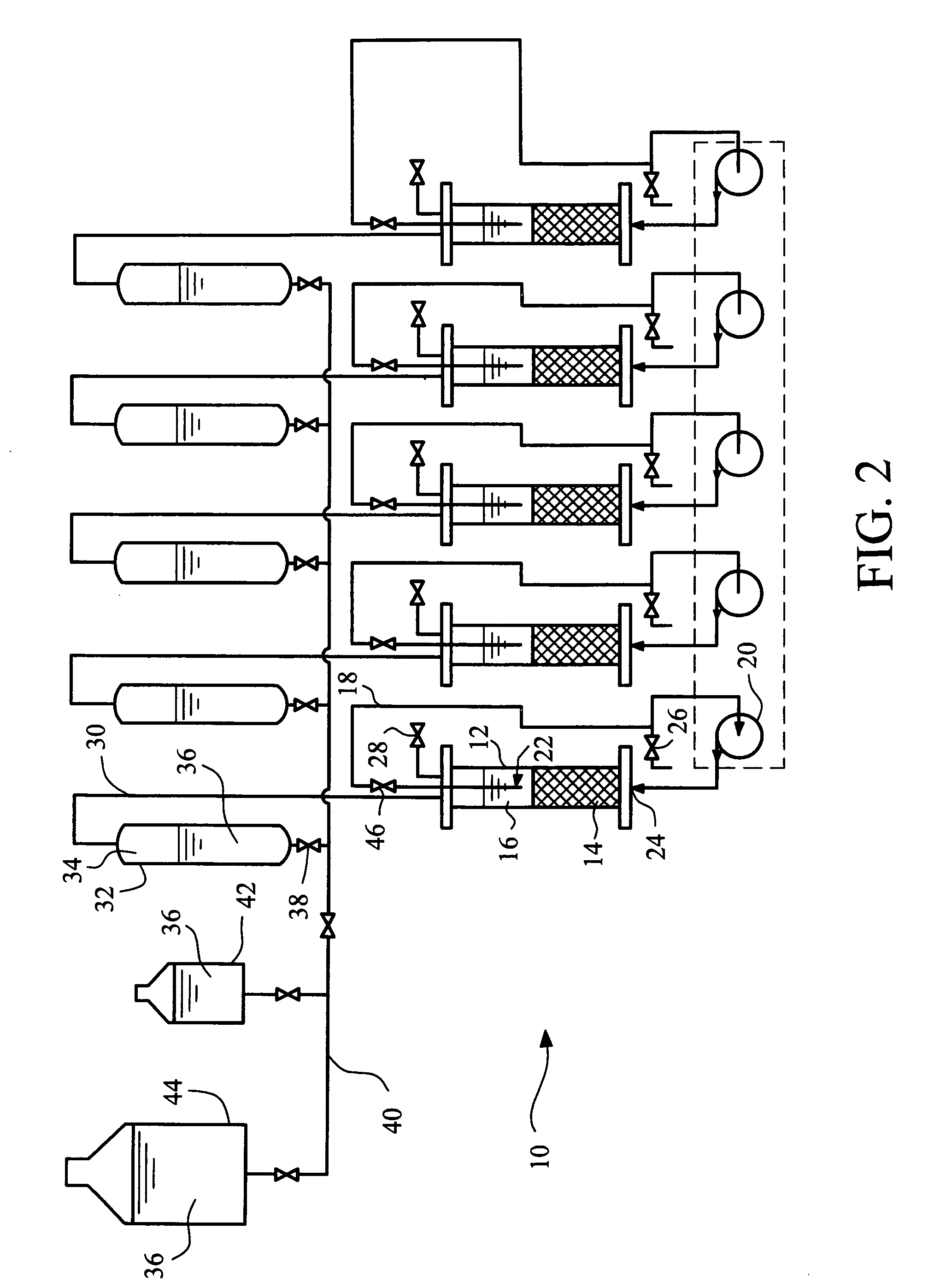Biological methane production from coal, manure, sludge, wastes, or other carbonaceous feedstocks with simultaneous sequestration of co2
a technology of carbon dioxide sequestration and biological methane, which is applied in the direction of waste based fuel, food preparation, separation processes, etc., can solve the problems of increasing energy production price, increasing the price of energy production, and mining disasters, so as to reduce the greenhouse gas content of the produced gas, high greenhouse gas production capacity, and high quality of methane products
- Summary
- Abstract
- Description
- Claims
- Application Information
AI Technical Summary
Benefits of technology
Problems solved by technology
Method used
Image
Examples
example 1
[0034]The following general procedure was used for evaluating biological methane production. About 10 dry grams of ground coal (e.g., North Dakota lignite coal) and one or more alkaline earth metal salts (typically a mixture of about 10 grams of ground olivine with about 10 grams of ground serpentinite) are placed in a 1.75 inch (inner diameter) by 14 inch (length) acrylic tube containing about 240 mL of a culture medium. The tubes are sealed with top and bottom plates including ports for adding materials and slowly circulating the liquid culture medium. The aqueous culture medium preferably includes water, about 1 g / mL sodium sulfide, about 1 g / mL of dipotassium hydrogen phosphate, about 1 g / mL of ammonium chloride, along with about 2 dry grams of digested sewage sludge and about 1.1 dry grams of an activated sewage sludge from a local sewage treatment plant. Typically the sludges are added as aqueous suspension having a solids level of about 3 to 6 percent by weight. Anaerobic con...
example 2
[0038]Additional experiments were run utilizing a mixture of about 10 grams of ground olivine and about 10 grams of ground serpentinite as the source of alkaline earth metal silicate, combined with about 10 grams of ground lignite coal under the same conditions as described in Example 1. The average number of milliliters of total gas, methane, and carbon dioxide produced per gram of dry coal / mineral feed, per day, was determined compared to similar experiments in which the ground minerals were omitted. The results are shown in Table 1.
TABLE 1Gas Production Data.With olivineWithoutDiffer-and serpentinitemineralsenceGas Production RatesmL of gas / dry g feed / day14.703.2511.5mL of methane / dry g feed / day13.462.3511.1mL carbon dioxide / dry g feed / day1.250.890.4Gas CompositionAvg. methane %91.579.012.5Ave. carbon dioxide %8.621.040.7
[0039]The results in Table 1 clearly demonstrate an unexpectedly high gas production rate for the alkaline earth silicate mineral-containing example relative to ...
example 3
[0040]This example demonstrates carbon dioxide capture and sequestration as metal carbonates in solid residues formed in the reactor. One important feature of this invention is that carbon dioxide is precipitated as an insoluble metal carbonate in solid residues within the reactor, effectively sequestering the carbon dioxide. Acidification by dissolved CO2 solublizes divalent or multivalent metals from the minerals present in the reactor to initiate the process. Carbonates form by reaction of minerals present in the reactor inoculum with carbon dioxide produced by anaerobic digestion of organic materials in the reactor. In this example the amount of carbon dioxide sequestered in a test reactor with minerals present was compared to the amount of carbon dioxide sequestered in a control reactor without any minerals present.
[0041]To quantitatively evaluate the production of metal carbonates, the contents of test reactor (with mineral) and control reactor (without mineral) were each sepa...
PUM
| Property | Measurement | Unit |
|---|---|---|
| mean particle size | aaaaa | aaaaa |
| temperature | aaaaa | aaaaa |
| pH | aaaaa | aaaaa |
Abstract
Description
Claims
Application Information
 Login to View More
Login to View More - R&D
- Intellectual Property
- Life Sciences
- Materials
- Tech Scout
- Unparalleled Data Quality
- Higher Quality Content
- 60% Fewer Hallucinations
Browse by: Latest US Patents, China's latest patents, Technical Efficacy Thesaurus, Application Domain, Technology Topic, Popular Technical Reports.
© 2025 PatSnap. All rights reserved.Legal|Privacy policy|Modern Slavery Act Transparency Statement|Sitemap|About US| Contact US: help@patsnap.com


